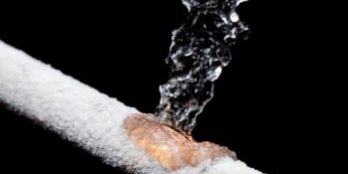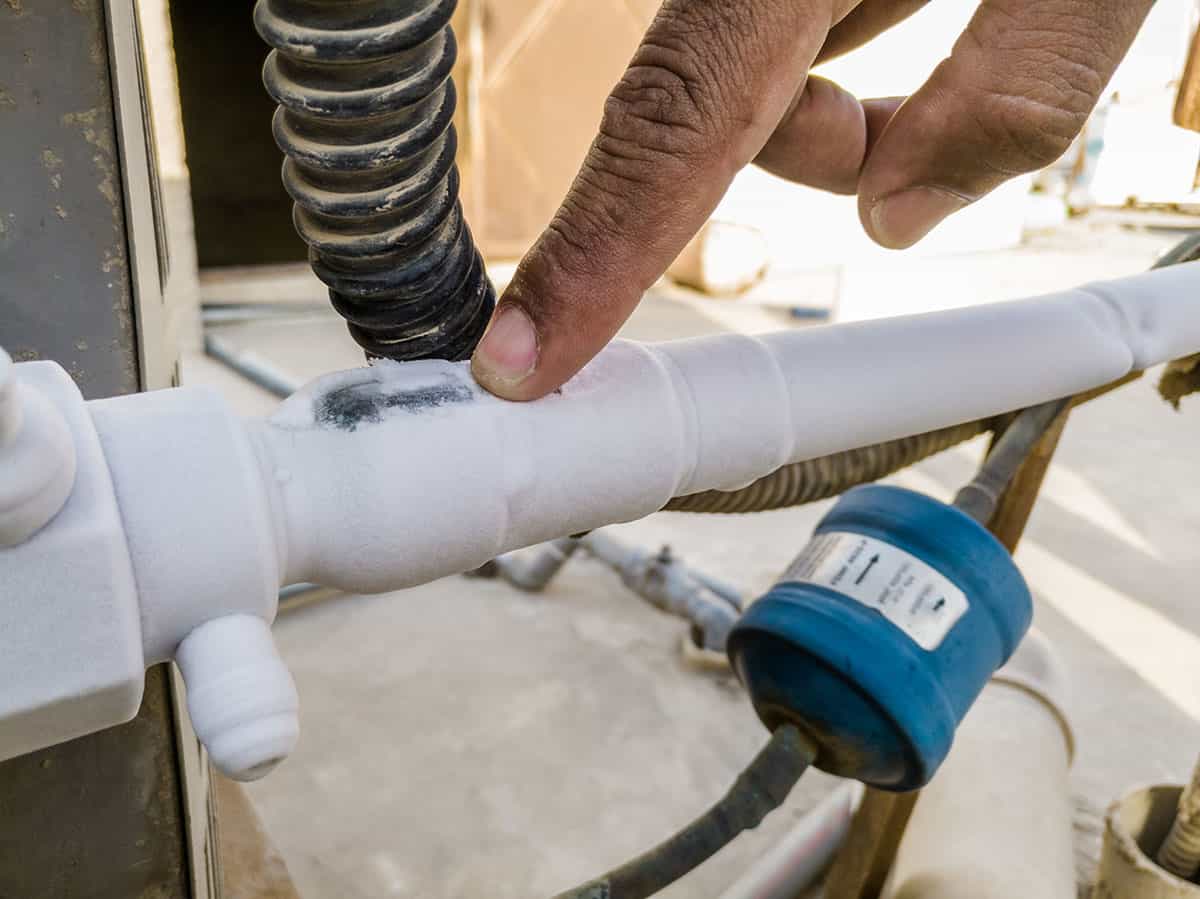What Should I Do If My AC Pipe Is Frozen? - Essential Tips for Restoring Functionality
What Should I Do If My AC Pipe Is Frozen? - Essential Tips for Restoring Functionality
Blog Article
What are your thoughts on Have a Frozen AC Line? Here’s How to Fix It?

Introduction
Finding that your a/c pipeline is iced up can be worrying, specifically throughout warm summertime when you count on your air conditioning unit the most. Understanding what to do in such a scenario is critical to stop more damage to your cooling system and guarantee your convenience inside your home.
Recognizing the Causes
A number of variables can contribute to the cold of an air conditioner pipe. Comprehending these causes can aid you attend to the problem effectively.
Absence of Airflow
One common source of a frozen AC pipeline is inadequate airflow. When the air flow over the evaporator coil is restricted, it can trigger the coil to go down below freezing temperature, bring about ice formation on the pipeline.
Reduced Refrigerant Levels
Insufficient cooling agent degrees in your air conditioning system can additionally cause an icy pipeline. Reduced refrigerant levels can trigger the stress in the system to drop, resulting in the freezing of dampness on the evaporator coil.
Winter Conditions
In colder climates, freezing temperatures outside can contribute to the freezing of a/c pipelines. If your air conditioner device is not effectively insulated or if there are leaks in the ductwork, cold air can infiltrate the system, causing the pipeline to ice up.
Dirty Air Filters
Unclean or clogged up air filters can limit air flow in your a/c system, resulting in various issues, consisting of an icy pipe. It's essential to replace or cleanse your air filters frequently to make certain proper air movement and stop ice build-up.
Indicators of a Frozen Air Conditioning Pipe
Acknowledging the signs of an icy a/c pipe is vital for punctual action.
Reduced Airflow
If you observe a considerable decline in airflow from your vents, it might indicate an icy pipe.
Ice Buildup on the Pipe
Noticeable ice buildup on the cooling agent line or the evaporator coil is a clear sign of an icy air conditioning pipe.
Odd Sounds from the Unit
Uncommon noises, such as hissing or bubbling, coming from your air conditioning unit can signify that there's ice existing on the pipe.
Immediate Actions to Take
When faced with an icy a/c pipe, it's essential to act promptly to avoid further damages to your cooling system.
Switching off the a/c
The initial step is to switch off your air conditioner to avoid the system from running and exacerbating the problem.
Looking for Blockages
Examine the location around the interior unit for any type of blockages that may be blocking air flow, such as furnishings or drapes.
Thawing the Pipe
You can use mild techniques like placing towels taken in warm water around the icy pipe to aid thaw it slowly.
Safety nets
Taking preventive measures can help prevent future occurrences of an icy AC pipeline.
When DIY Methods Fail
If your efforts to thaw the pipe or address various other issues are not successful, it's time to call in an expert.
Importance of Hiring a Professional HVAC Technician
A certified HVAC service technician has the proficiency and tools essential to diagnose and repair concerns with your AC system safely and successfully.
Normal Maintenance Checks
Schedule regular upkeep get in touch with a professional HVAC specialist to make sure that your a/c system is running successfully.
Changing Air Filters
On a regular basis replace or clean your air filters to prevent air movement limitations and maintain optimal efficiency.
Insulating Exposed Pipes
If your air conditioner pipes are revealed to cool temperature levels, think about protecting them to avoid freezing throughout cold weather.
Looking For Professional Help
If DIY approaches stop working to settle the problem or if you're uncertain concerning how to continue, it's finest to look for support from a certified HVAC service technician.
Verdict
Handling an icy air conditioning pipeline can be an aggravating experience, yet understanding just how to respond can assist decrease damage and recover convenience to your home. By understanding the reasons, identifying the signs, and taking timely activity, you can effectively deal with the concern and protect against future occurrences.
G UP? HOW TO FIX IT?
It happens all over America. And the rest of the world probably. It’s the hottest day ever and for some darn reason your AC isn’t cooling the house. You fiddle with the thermostat to try and fix the problem. Nada. All you can do now is go outside and check the AC unit. You make your way there and find your air conditioner unit is frozen! But how?
In this post we’ll cover how you can tell that your air conditioner has frozen (other than the obvious reasons), what could have caused the freeze, and some of the things you can do about your AC freezing up. And if you have a frozen heat pump condenser, read our blog about it to learn what to do! But remember, it is always best to avoid your AC freezing up with an AC tune up. And if you are moving into a home, it's critical to get HVAC inspection so that you are aware of an AC problems before you move in.
Keep reading and you may be able to fix the frozen AC yourself. If you can’t, call an HVAC specialist. If you live in Maryland, call SuperTech HVAC for AC repair. We’ll take care of it.
How Does An Air Conditioning Unit Work?
How you probably imagine an AC works is wrong. Contrary to popular belief, an AC system does not inject cool air into a building. Instead, it removes the heat from inside and transfers it outside. Cool huh? (Pun intended).There are 4 major components among the 3 stations of an air conditioning system: the evaporator coil, the compressor, the condenser, and the refrigerant – a special chemical that links everything together through a closed loop system.
Station 1:
Warm indoor air is sucked into the return vent, through a filter, and blows over the evaporator coil. The heat is absorbed into the cold refrigerant, turning it from liquid to gas. The air, which is now cool, is blown back into the home to areas that your thermostat, i.e. you, has decided.
Station 2:
The refrigerant makes its way outside the house to the compressor, which squeezes the warm refrigerant, raising its gaseous temperature even more.
Station 3:
When the super hot vapor refrigerant reaches the condenser, the last step, the heat is expelled and absorbed into the outdoor air. The refrigerant instantly cools, which changes it from gas back to liquid form. The cold liquid refrigerant is now ready to return to station 1 and repeat the process.
Is Your AC Freezing Up? Here Are The Signs:
As you may have guessed, your air conditioner unit freezing up on a hot day is not normal.
If this happens, there's no need to panic. Often the issue can be solved with a little troubleshooting. If the AC unit is left frozen for too long however, you may find yourself with a bigger problem.
First things first, how do you know your AC is frozen?
Well, the obvious sign is the ice on your refrigerant line-set pipe. Simply check between your outdoor AC unit and your home's exterior wall to see whether your AC line frozen.
You might also have a frozen evaporator coil. This one's not as easy to check. You'll need to open a panel on the indoor unit to inspect. Don't do this unless you're handy. If you aren't, call an HVAC pro like SuperTech HVAC or you may damage something in the process.

I'm very fascinated with Why Is Ice On My Outside Air Conditione and I am assuming you appreciated our article. Enjoyed reading our article? Please share it. Let somebody else check it out. We treasure reading our article about What Do I Do If My AC Pipe Is Frozen.
Click Here Report this page